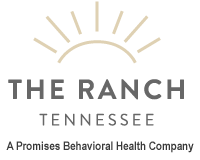Lean, also known by street names like “purple drank,” “sizzurp,” or “dirty Sprite,” may sound like a trendy or harmless beverage, but it’s anything but. This dangerous concoction has grown in popularity among teens and young adults, especially through music and social media, despite its high potential for harm and addiction.
At The Ranch Tennessee, we’ve seen firsthand the toll substances like lean can take on clients and their families. This guide explores what lean is, why it’s addictive, how to spot the signs of lean drug abuse, and what recovery looks like for those struggling to stop.
What is lean?
Lean is a recreational drug mixture that typically combines prescription-strength cough syrup containing codeine and promethazine with soda and sometimes candy for flavoring. It gets its name from the “leaning” sensation it causes due to its strong sedative effects.
While it may appear colorful or harmless, lean is a powerful depressant that affects the central nervous system. Prolonged use can lead to lean addiction, severe health complications, and in some cases, overdose or death.
Common lean drug ingredients
The main ingredients that give lean its psychoactive effects include:
- Codeine: A prescription opioid used to treat mild to moderate pain and suppress coughing. Codeine is the primary addictive component in lean.
- Promethazine: An antihistamine that causes sedation and can enhance the effects of opioids.
- Soda or fruit-flavored soft drinks: Used to dilute the bitterness of the medication.
- Hard candy (often Jolly Ranchers): Added for additional sweetness and flavor.
These lean drug ingredients combine to create a euphoric, drowsy high that can be appealing to first-time users but quickly turns dangerous with continued use.
Lean drug effects on the body and mind
The initial lean drug effects may seem mild or even pleasant—relaxation, sedation, or a floaty feeling. However, these short-term effects can mask more serious risks.
Physical and psychological effects of lean include:
- Slurred speech
- Drowsiness and slowed reaction time
- Impaired coordination
- Nausea and vomiting
- Confusion or mental fog
- Slowed heart rate and breathing
- Hallucinations (in high doses or when mixed with other substances)
Repeated use increases the risk of tolerance, dependence, and withdrawal, hallmarks of lean addiction.
Learn more about the risks and lean drug effects.
Lean drug side effects and health complications
Using lean carries serious health consequences, especially with regular use. The lean drug side effects can affect multiple body systems:
- Respiratory depression: A major risk when codeine is taken in high doses or combined with other depressants like alcohol or benzodiazepines.
- Seizures: Promethazine can lower the seizure threshold in some users.
- Heart problems: High doses can cause irregular heartbeat and blood pressure issues.
- Cognitive impairment: Long-term use may lead to memory issues and mental sluggishness.
- Constipation and gastrointestinal distress
- Dental erosion and weight gain due to the sugar content in soda and candy
These risks are even greater for individuals who mix lean with other substances.
Explore lean drug dangers to understand why early intervention matters.
Recognizing lean drug symptoms
Identifying a lean problem early can be life-saving. Some of the most recognizable lean drug symptoms include:
- Slowed speech and motor function
- Bloodshot eyes or pinpoint pupils
- Increased drowsiness or sleeping during the day
- Mood swings or depression
- Secretive behavior or hiding drinks
- Unexplained cough syrup or pill bottle use
- Lack of motivation or poor school/work performance
If you notice these signs in yourself or someone you care about, it may be time to consider lean addiction treatment.
Dangers of lean drug abuse
Lean is often misunderstood as a “soft” drug because it’s made from legal ingredients. But lean drug abuse is anything but safe. Codeine is an opioid, and regular use can quickly escalate into full-blown addiction.
Some of the most concerning lean drug dangers include:
- Increased risk of overdose, especially when combined with alcohol or other drugs
- Dangerous withdrawal symptoms upon quitting
- Development of long-term organ damage (liver, kidneys, heart)
- Risk of life-threatening respiratory failure
- Social, academic, or career consequences from impaired functioning
Visit our full resource on lean drug dangers for more in-depth insight.
Risk of lean drug overdose
One of the greatest risks of lean is lean drug overdose. Because the ingredients vary by user and batch, it’s difficult to track how much codeine or promethazine someone is consuming.
Overdose symptoms may include:
- Slowed or stopped breathing
- Loss of consciousness
- Seizures
- Cyanosis (blue lips/fingertips)
- Vomiting or choking
- Irregular heartbeat
If you suspect an overdose, call 911 immediately. Administering naloxone (Narcan), an opioid reversal medication, can be life-saving in cases of opioid overdose.
Lean drug withdrawal: what to expect
Once someone is physically dependent on lean, stopping suddenly can trigger lean withdrawal symptoms. These may include:
- Muscle aches and sweating
- Intense cravings
- Nausea, vomiting, or diarrhea
- Anxiety or agitation
- Insomnia
- Depression or mood swings
Because withdrawal can be physically and emotionally difficult, detoxing under medical supervision, such as at a program like The Ranch, is the safest option.
Lean drug recovery and treatment options
Recovery from lean addiction is possible with the right combination of medical care, therapy, and long-term support. At The Ranch Tennessee, we take a whole-person approach to healing, addressing the physical, emotional, and behavioral factors that contribute to substance use.
Our lean addiction treatment may include:
- Medical detox: Supervised support for safe withdrawal
- Inpatient treatment: Structured, trauma-informed care in a healing environment
- Outpatient services: Continued care for clients transitioning from inpatient or with milder symptoms
- Therapies: Cognitive-behavioral therapy (CBT), dialectical behavior therapy (DBT), EMDR, equine-assisted therapy
- Peer support: Group therapy and 12-Step or AA-alternative integration
- Aftercare planning: Ongoing support and relapse prevention strategies
Recovery isn’t just about stopping the drug. It’s about rebuilding a healthy, meaningful life.
FAQ
What are the common symptoms of lean drug addiction?
Symptoms of addiction include cravings, increasing use despite negative consequences, drowsiness, changes in behavior, withdrawal symptoms, and hiding or lying about lean use. These are all signs of lean drug addiction and should not be ignored.
How does lean drug abuse affect the body and mind?
Lean drug abuse depresses the central nervous system, leading to slowed heart rate, respiratory issues, and impaired cognition. Long-term use can result in mood disorders, memory problems, and physical health complications.
What are the potential dangers and side effects of using lean?
Side effects include sedation, nausea, constipation, heart rhythm issues, seizures, and overdose. For more, see our page on lean drug dangers.
What ingredients in lean contribute to its addictive nature?
Codeine is the main addictive substance in lean. It acts on the brain’s opioid receptors and can quickly lead to dependence. Promethazine enhances sedation and can contribute to physical and psychological effects.
What treatment options are available for overcoming lean addiction?
Options include detox, inpatient rehab, outpatient care, behavioral therapy, trauma-informed counseling, and peer support. Visiting a lean addiction treatment center can help you explore your options for healing and recovery.
Reclaim your health and future at The Ranch
If you or someone you love is struggling with lean drug addiction, you are not alone, and help is available. At The Ranch Tennessee, we offer comprehensive, compassionate care that’s personalized to your needs and grounded in proven recovery methods.
Call us today at 1.844.876.7680 or contact us online to begin your journey toward wellness. Whether you’re facing withdrawal, concerned about long-term use, or ready to take the first step, we’re here to support you every step of the way.

